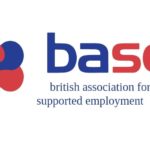Joseph Rowntree Foundation have published their latest report ‘UK Poverty 2024: The Essential Guide to Understanding Poverty in the UK’. Since the last report, published one year ago, there has been more and more evidence that households are having to take desperate measures to make ends meet.
Poverty can lead to negative impacts at all stages of life, and as we are entering this election year, we have unacceptably high levels of poverty. This report uses a range of data resources and published insight to build a picture of the current state of poverty across the UK.
Key Findings
- There is an increase in poverty – close to pre-pandemic levels. More than 1 in 5 people in the UK were in poverty in 2021/22.
- Overall poverty has barely moved since 2010.
- Children have consistently had the highest poverty rates, while pensioners and working-age adults without children now have the lowest.
- Poverty is deepening – 4 in 10 of those in poverty were in deep poverty in 2021/22. Deep poverty is referred to an income far below the standard poverty line.
- In 2019/20 and 2021/22, the average person in poverty had an income 29% below the poverty line. This is equivalent to £6,200 a year between 2019/20 and 2021/22 for a couple with two primary-school-aged children. For the same family in very deep poverty, this gap was equivalent to £12,800.
- Around 3.8 million people experienced destitution in 2022, including around 1 million children.
- In October 2023: around 2.8 million of the poorest fifth of households were in arrears with their household bills; 4.2 million households were going without essentials; and 3.4 million households reported not having enough money for food.
Some groups have wholly unacceptably high rates of poverty:
- Large families consistently had higher rates of poverty, with 43% of children in large families in poverty. 44% of children in lone-parent families were in poverty – as were 32% of children in families where the youngest child was under 5.
- Around half of people in Pakistani (51%) and Bangladeshi (53%) households lived in poverty.
- 4 in 10 people in households headed by someone from an Asian background (other than Indian, Pakistani, Bangladeshi, or Chinese) or other households from Black African backgrounds were in poverty, with around half of children in these households also living in poverty.
- The proportion of disabled-working adults has increased from 42% in 2010/11 to 51% in 2021/22. However, poverty rates have remained steady over that period, yet rates for disabled people are 12ppts higher than for people who were not disabled.
- Reduced ability to work means that informal carers face a financial penalty, costing informal carers an average of £414 a month.
- For people claiming income-related benefits, poverty rates were much higher than the national average poverty rate. This demonstrates that the levels of benefits available is frequently not sufficient to enable recipients to escape poverty.
Recommendations
The key test is to evaluate political parties’ policies, and their proposals to tackle hardship and expand the foundations of economic security to everyone. This requires action to reset our social and economic fundamentals in a number of ways, starting with the following:
- Offering help and space for those looking for work to find a secure job that sticks, while making work possible and desirable for those outside the labour market if this is feasible.
- Raising the basic level of workplace rights and protections, including expanding rights to flexible working, alongside improving financial protection if people lose their job or cannot work for a period.
- Protecting time for families and for caring around work life, while building up and strengthening the infrastructure of care services that families can rely on.
- Ensuring social security provides sufficient income to afford the essentials, alongside forging a ‘social safety net’ of crisis support, practical help, and social connection where people live.
- Putting future pension provision on a more secure footing by raising minimum contribution rates and establishing good options for people to use their savings pot to provide a secure standard of living in retirement.
- Helping people to accrue modest savings, access affordable credit, gain relief from problem debt, and hold assets (especially those without access to family wealth).
- Expanding access to secure homes, whether rented or owned, via interventions to build more new homes and shift the distribution of existing homes.







